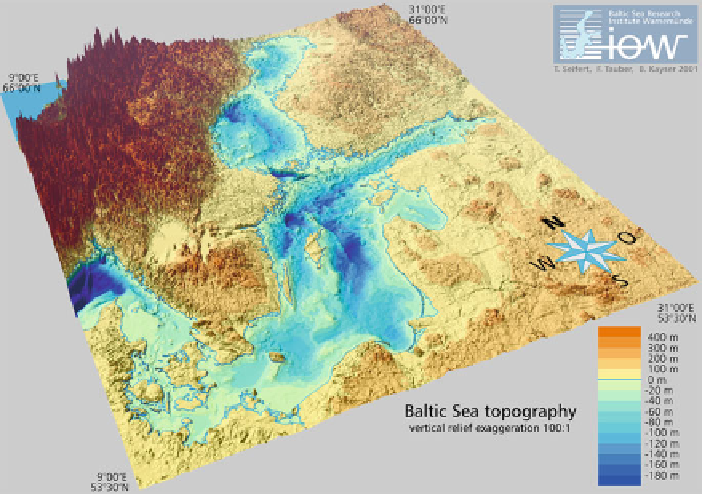Geoscience Reference
In-Depth Information
13.1 Beaches Along the North Estonian Coast
the typical features of water bodies of comparable size. Pronounced salinity
gradients and rich mesoscale dynamics distinguish this basin from large lakes and
create a similarity of its basic processes with those occurring in the open ocean
cal conditions reveal remarkable anisotropy and non-homogeneous patterns of wind
tibility with respect to (changes of) the external forcing factors. Dominant winds
blow obliquely with respect to the axis of the gulf, giving rise to wave systems with
quently differs from the wind direction. A short “memory” of wave fields (Soomere
it frequently possible to identify the impact of single storm or wind event in the
coastal landscape. While large parts of the Baltic Sea coasts express relatively sim-
ple geomorphic and lithodynamic features (e.g. the almost straight eastern coast
Fig. 13.1
Location and bathymetry of the Baltic Sea. From Seifert et al. (
2001
)
by kind permission
of T. Seifert

